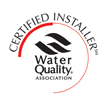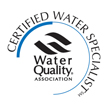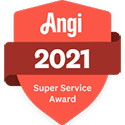Water Quality Issues
HOW SAFE IS OUR DRINKING WATER?
Even the experts disagree about the extent of groundwater and surface water contamination problems. That’s because each drinking water supply is different, and can be subject to contamination from various sources and different types of contaminants.
However, what the experts do agree on is this: access to good, safe drinking water is essential for your health and wellbeing. Therefore, it’s vital to check for potential contamination and ensure the quality of your drinking water supply.
THE REAL THREAT
Today, the risk of contamination is high, and the threat of both short- and long-term health consequences are serious.
The National Water Quality Assessment Program, an ongoing study by the U.S. Geological Survey, has found that about 50 percent of sampled wells contain at least one pesticide. The same study found that more than 50 percent of streams sampled contained five or more pesticides.
An estimated one million people get sick each year from contaminated water, according to experts at the Center for Disease Control, and nearly 1,000 of those victims die. Even local outbreaks can be very serious. In 1993, a Cryptosporidium outbreak in Milwaukee sickened more than 400,000 residents and resulted in over 100 deaths.
Some contaminants can do harm long after the initial exposure. Trihalomethanes, which are by-products of disinfecting with chlorine, are now being linked to urinary, bladder, and rectal cancers, at more than 10,000 cases per year.
MAJOR SOURCES OF CONTAMINATION
Experts are most concerned about five contamination sources:
- Leaky Storage Tanks – Here in the United States, there are between five to seven million underground storage tanks, with an estimated 11 million gallons of gasoline lost each year due to leaky tanks, according to the U.S. EPA.
- Pesticides and Herbicides – According to a 1994 report from the National Wildlife Federation, farmers apply 600 million pounds of pesticides and herbicides to crops annually, that eventually end up in the groundwater table.
- Disposal of Garbage – The Environmental News Network estimates 154 million tons of garbage are generated each year in the United States. The improper disposal of that garbage can leach harmful contaminants into groundwater.
- Lead and Chlorine By-Products – Corrosion in older municipal distribution systems allows lead, which has been used in service connections, goosenecks, water meters, solder, and brass fixtures, to leach into our drinking water supplies. Chlorine, used in municipal supplies to protect us against microbiological contamination, is known to form by-products called trihalomethanes, which are suspected carcinogens.
- Waste Disposal Facilities – There are approximately 250,000 solid waste disposal facilities located across the United States. At each facility, various chemicals are present that have the potential to threaten groundwater supplies.
These are some of the most common sources of water contamination. However, the full list of contamination sources is almost endless, as is the list of contaminants.
WATER PROBLEMS CAN BE CORRECTED
Despite the many water issues faced today, practically any problem that arises in drinking water can be corrected.
Through the application of one or more water treatment systems offered by Reynolds Water Conditioning Co. water problems can be solved, and good, safe drinking water can be provided to the people that need it.
The cost of treatment depends on the type and scope of the problem and which treatment options are selected.
DOES ALL OF THE WATER IN THE HOUSEHOLD NEED TO BE TREATED?
Although the average water usage per person per day totals approximately 60 to 75 gallons of water, the amount used for drinking and in cooking is much less — around only five quarts per person per day.
So when it comes to improving the quality of a drinking water supply, there is a choice to be made: treat all the water or just the water used for human consumption.
Correcting all the water in the house is done by a “whole house” or “point of entry” (POE) system. Correcting only the water used for drinking and cooking is achieved with a “point of use” (POU) system.
Potential contaminants that may cause health concerns can often be treated with a system attached directly to the drinking supply at the point of use (POU). However, other contaminants associated with health concerns, including volatile organic chemicals and radon in water, need to be treated as the water enters the home by a POE system. That’s because the nature of these contaminants (rapidly volatilizing into the air) means preventing any exposure to household inhabitants.
WATER FACTS
- Likely 50 percent of the world’s population and up to 75 percent of Americans are chronically dehydrated.
- In 37 percent of Americans, the thirst mechanism is so weak that it’s often mistaken for hunger.
- Even MILD dehydration can slow your metabolism by as much as three percent.
- One glass of water shut down the midnight hunger pangs for almost 100 percent of dieters in a University of Washington study.
- Lack of water is the number one trigger of daytime fatigue.
- Preliminary research indicates that eight to 10 glasses of water a day could significantly ease back and joint pain for up to 80 percent of sufferers.
- A mere two percent drop in body water can trigger fuzzy short-term memory, trouble with basic math, and difficulty focusing on a computer screen or printed page.
- Drinking five glasses of water per day can decrease the risk of colon cancer by 45 percent, slash the risk of breast cancer by 79 percent, and the chance of bladder cancer by 50 percent.
Through its membership in WQA, since 1950, Reynolds Water Conditioning Co has agreed to an industry Code of Ethics and has access to the most up to date information available, including professional certification, training and continuing education, state of the art technology, technical services, industry trends and statistical data, and research and development.







